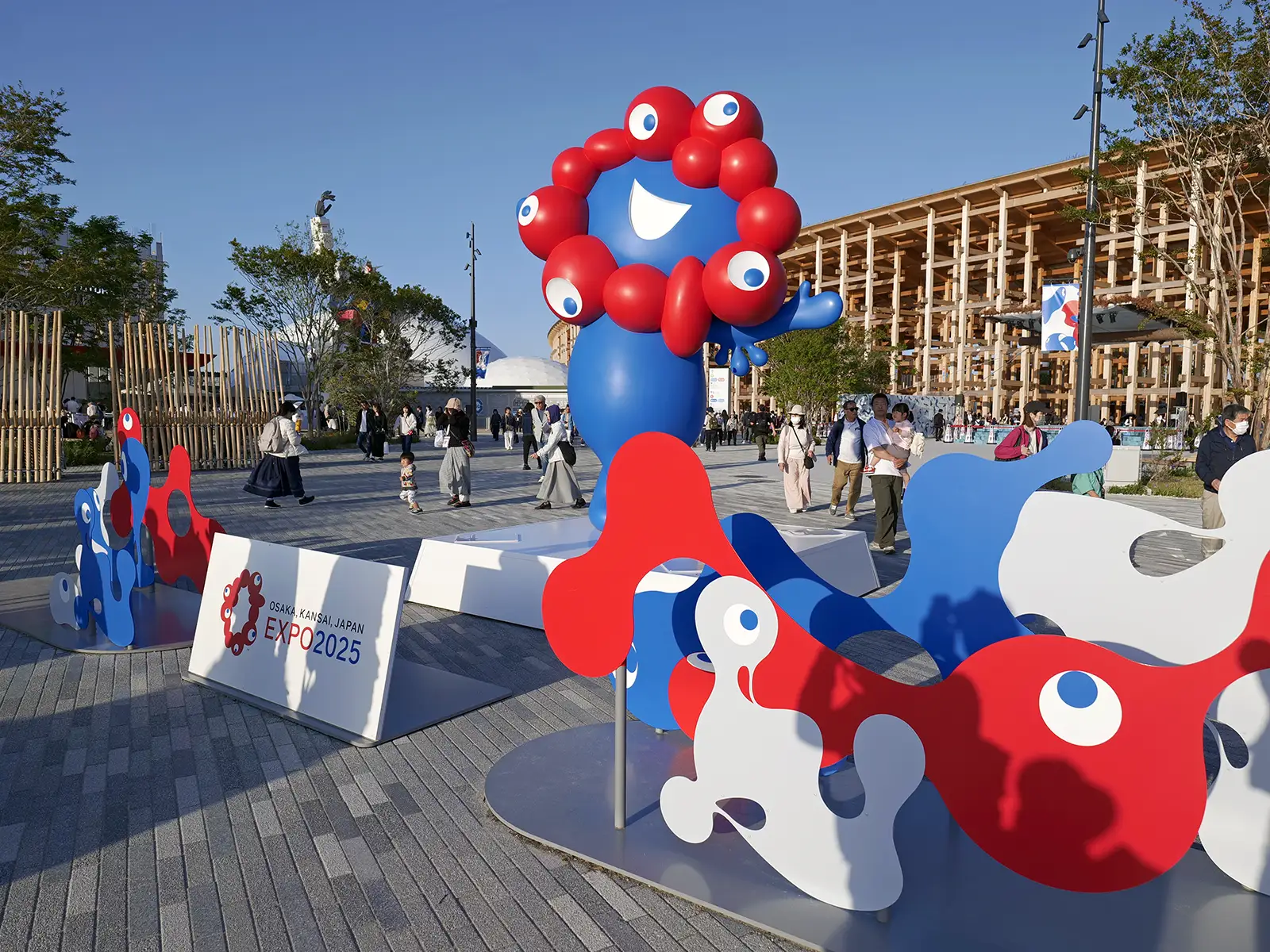
I’m back from Osaka with plenty to share about the futuristic tech I saw. Yep, from a robotic personal vehicle to iPS-generated organs, this article will give you a taste of what life will be like in 2025.
I’m a planner. But when I entered the exhibition grounds at Expo 2025 in Osaka last week, there were a couple of things I hadn’t counted on. First was the heat. I’m used to hot weather, but 100-degree temperatures plus humidity made for a completely new clime; a very sweaty one! Another surprise? The futuristic tech at Expo 2025. Although I was aware that concepts and sustainable innovations would be presented, I was not expecting to be so inspired by them. Related: Three Things I Didn’t Expect to See at the Osaka Expo 2025 And I was inspired.
Expo 2025, set on 383-acres, with pavilions representing over 150 countries and organizations, has plenty to gawk at. But what actually stopped me in my tracks were the exhibits’ interpretations of life in the future. The CORLEO, a personal vehicle that can be driven like a horse, was made by Kawasaki.
Then, there was an ocean-based hydrogen power balloon that generates power from crashing waves. Overall, the expo gave me hope because it was like looking out a window at the world in 2050. The World Expo has always been a showcase of solutions to the world’s most pressing problems. That means putting an emphasis on health, mobility, and sustainable living in 2025. As an editor, I was happy these ideas took center stage, and it’s why I’m sharing some of my favorite futuristic innovations from Expo 2025.
1. Kawasaki CORLEO
By 2025, our personal mobility needs will have changed drastically, according to the Kawasaki Group, experts in motorcycle and robotic technology. Hence, it created the 2025 concept off-road personal mobility vehicle, CORLEO. This lion-like, four-legged vehicle is on display at Expo 2025. It can handle bumpy terrain, stays stable, and gives you a lot of control. Interestingly, riders control the vehicle via weight shifts, like horseback riding. So, there are no complex commands to remember, keeping the ride intuitive.
CORLEO also runs on hydrogen, a key solution to a decarbonized society. Kawaski envisions the vehicle as a means of navigating difficult terrain such as mountains and even bodies of water. Seeing CORLEO sprint through valleys and scale mountains is otherworldly.
2. Kubota Type V and Type S Autonomous Tractors
Japanese tractor company Kubota wowed Expo 2025 visitors with its conceptual Type V and Type S autonomous tractors. That’s right, I said autonomous. Shaped like giant robot lawnmowers, these concept tractors are actually robotic platforms that can complete all tasks in the agricultural progress.
How? They work with various implements and attachments and can be operated remotely. In 2050, farmers might only need one tractor to cover all their tasks. With the increasing shortage of farm labor and the rise of eco-conscious farming, tractors like Type V and Type S will be essential. Type V’s body is a bit like a transformer. It can expand and contract from side to side, up and down, and forward and backward, adapting to tasks as needed.
3. Honda UNI-ONE
Another cool mobility device on display at Expo 2025 is the Honda UNI-ONE. This seated personal mobility vehicle developed by Honda’s robotics research team gives people more mobility options. Like the CORLEO, the user steers it by shifting their weight while sitting. This keeps the hands free to move naturally, like when walking. The design is stable, so it’s great for adults as well as kids.
My favorite feature is the adjustable height! Yes, this mobility device can go down and up. The UNI-ONE starts in its lowest position, so the the rider can get on easily. After that, it raises so that the rider can see people passing by at eye level. This makes communicating with others easier. Let’s give it up for accessibility tech that improves people’s lives and gives them more options!
4. Luup Unimo
As populations age and longevity improves, seniors will need new ways to move around. That’s where the Unimo a three-wheeled, compact personal vehicle comes in. Unlike today’s electric scooters and bikes, the Luup Unimo stays stable while moving and at rest, making it suitable for all ages and sexes.
I was happy to learn that it has on-board stability control and can adapt to different driving conditions. I would welcome more autonomous assistance, and I wager that retirees would as well. As someone who has a little fear of driving electric vehicles on busy city streets, I would welcome it. Users can also control it via app or server and it supports street use.
5. MIXI Romi Emotional Support Robot
I’ve seen a lot of emotional support robots over the years, but none as cute as MIXI’S Romi. Its raindrop-shaped, toy-like body and digital expressions (over 150 of ’em) are endearing. Unlike most conversation robots, Romi uses the latest AI to keep conversations going, letting you have a natural back and forth. It even expresses surprise when you pick it up and has a warm, caring style; I’d love to have one on my desk!
Free-chatting is said to be one of the most challenging abilities for AI to master. Romi has made incredible progress in the field thanks to it’s built-in communication AI. It creates conversations depending on the user’s feelings. The on-board AI can also store and retrieve memories that can help Romi respond to current situation. For example, Romi could remember that I like to talk about gardening and engage me in a conversation about roses, to keep me feeling chipper. It’s a great tool that has a ton of potential for anyone living on their own.
6. Power Wave DAC from Yellow Duck
Imagine a future where we collect and store hydrogen from the ocean. Although it sounds like 2050, the Yellow Duck team is aiming for that exact year. How does Yellow Duck’s technology work? An offshore system that produces electricity from wave motion to power a DAC system. This system can remove CO2 from the atmosphere, and an electrolysis process produces hydrogen from seawater. That’s exciting information. In a world facing both climate change and biodiversity loss, Yellow Duck’s technology has the potential to reduce carbon emissions, support marine ecosystems, and provide clean energy to remote and coastal areas. I love the prototype design: an inflatable yellow duck keeps the device afloat and visible to ships! Perhaps in the future, fun inflatables will be able to use the ocean to generate power for us!
 Techosta Where Tech Starts From
Techosta Where Tech Starts From